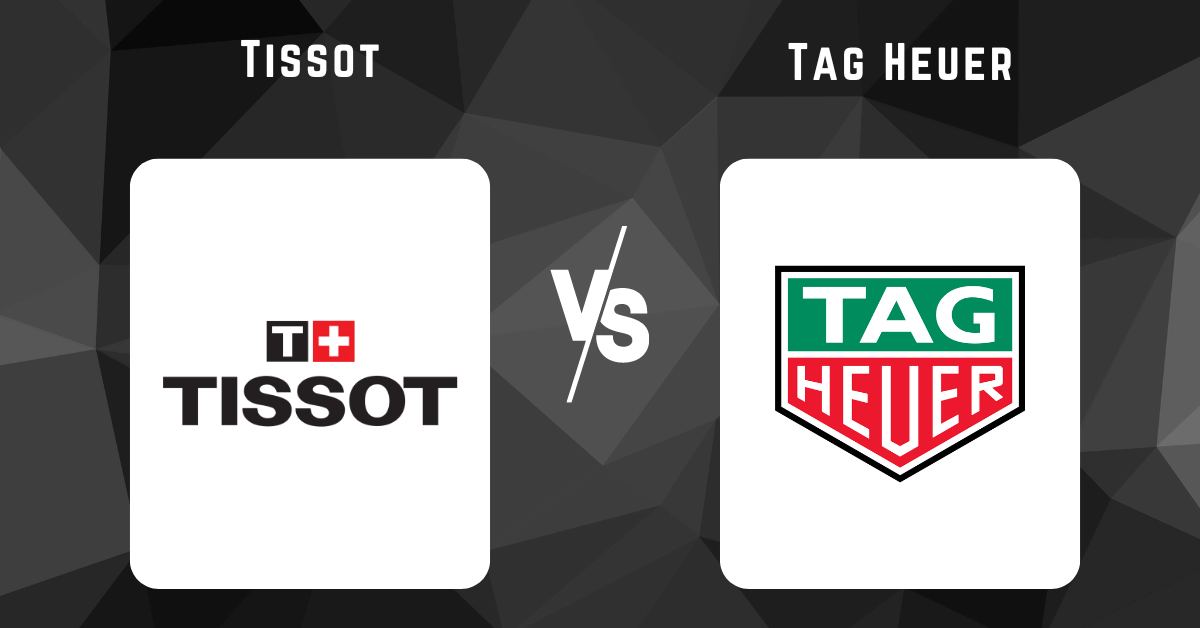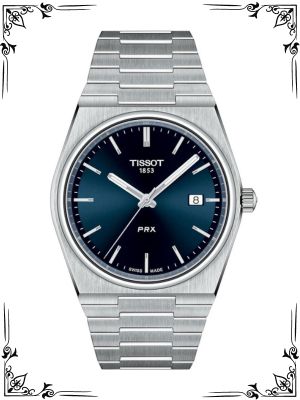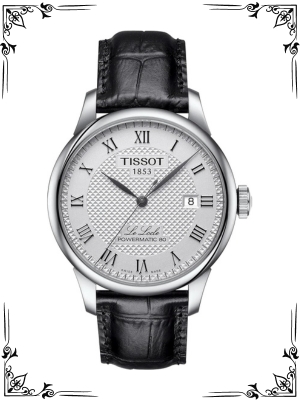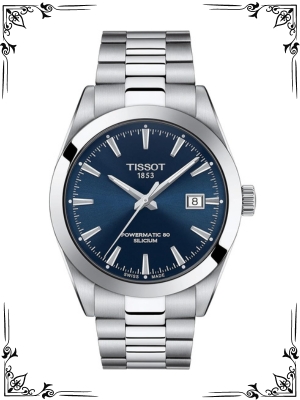Tissot: Affordable Swiss quality, diverse styles (classic, sporty), reliable automatic and quartz movements. Tag Heuer: Prestige brand, focus on sports chronographs, primarily automatic movements, higher price point.
Introduction
The world of luxury timepieces boasts a dazzling array of brands, each vying for your attention. Two Swiss giants, Tissot and Tag Heuer, frequently find themselves at the center of watch enthusiasts’ debates.
While both reside under the umbrella of the Swatch Group, they cater to distinct preferences. This comprehensive guide delves into the intricacies of Tissot and Tag Heuer, empowering you to navigate this exciting watch battle and select the brand that perfectly aligns with your style and budget.
Tissot: Founded in 1853, Tissot embodies a rich heritage in Swiss watchmaking. Renowned for its commitment to quality, affordability, and innovation, the brand offers a wide range of styles, from classic dress watches to sporty chronographs. Tissot caters to those who seek a reliable and stylish timepiece without breaking the bank.
Tag Heuer: Established in 1860, Tag Heuer has carved a niche in the realm of luxury sports watches. Synonymous with prestige, precision, and motorsports, the brand boasts a bold and dynamic aesthetic. Tag Heuer targets those who appreciate cutting-edge technology, high-performance features, and a brand name that commands respect.
History
Tissot: Throughout its illustrious history, Tissot has garnered numerous accolades for its pioneering spirit. Here are some milestones:
- 1853: Founded by Charles-Félicien Tissot and his son Charles-Émile in Le Locle, Switzerland.
- 1896: Tissot introduces the first mass-produced pocket watch, making timekeeping more accessible.
- 1930s: The brand gains recognition for its antimagnetic watches, a testament to their durability.
- 1970s: Tissot embraces the quartz revolution, offering highly accurate and affordable timepieces.
- Present Day: Tissot remains a leading manufacturer of high-quality Swiss watches at accessible prices.
Tag Heuer: Tag Heuer’s history is intertwined with motorsports and innovation. Here are some key moments:
- 1860: Founded by Edouard Heuer in Saint-Imier, Switzerland.
- 1911: Tag Heuer unveils the first dashboard chronograph for automobiles, a revolutionary invention.
- 1933: Heuer introduces the Mikrograph chronograph, capable of measuring time to 1/100th of a second.
- 1985: The brand becomes the official timekeeper for Formula One, solidifying its association with motor racing.
- Present Day: Tag Heuer continues to develop cutting-edge chronographs and luxury sports watches, maintaining its position at the forefront of the industry.
Both Tissot and Tag Heuer possess a rich heritage of innovation and dedication to their craft. Understanding their historical journeys helps them appreciate their brand identities and target audiences.
Technical Breakdown
Delving into the technical aspects of Tissot and Tag Heuer helps you grasp their strengths and potential drawbacks.
Movement:
Tissot: Offers a broader range of movements, including:
- Reliable and affordable ETA quartz movements for exceptional accuracy and minimal maintenance.
- Swiss Made Powermatic 80 automatic movements boast an impressive power reserve of up to 80 hours. These movements provide a smoother sweeping seconds hand and a more traditional watch experience.
- A select few models house higher-end automatic movements from ETA or Sellita.
Tag Heuer: Primarily utilizes automatic movements, emphasizing performance and prestige. These movements often come from ETA, Sellita, or even in-house Tag Heuer calibers. In-house movements signify a higher level of exclusivity and potential prestige. However, they can also translate to higher servicing costs. Some Tag Heuer models might also offer quartz movements, but these are less common.
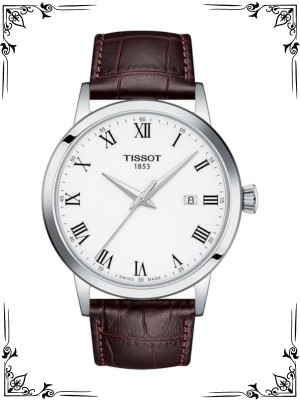
Here’s a table summarizing the key movement considerations:
| Feature | Tissot | Tag Heuer |
|---|---|---|
| Movement Range | Quartz, ETA/Sellita/Swiss Made Powermatic 80 automatic, select high-end automatics | Primarily automatic (ETA, Sellita, in-house calibers), some quartz options |
| Focus | Affordability, reliability, range of options | Performance, prestige, some in-house movements |
| Servicing Costs | Generally lower | Potentially higher due to complex movements |
Materials and Construction:
Tissot: Emphasizes high-quality materials at accessible price points. The most common material is 316L stainless steel, known for its durability and corrosion resistance.
Some Tissot models incorporate sapphire crystal, a highly scratch-resistant material for the dial window. A few higher-end models might utilize precious metals like titanium or rose gold.
Tag Heuer: Leverages premium materials to create a luxurious feel. 316L stainless steel remains the mainstay, but some Tag Heuer models incorporate ceramic bezels for enhanced scratch resistance and a more sophisticated aesthetic. Sapphire crystal is widely used for dial windows.
The brand also offers timepieces in precious metals like titanium, 18k gold, and even platinum for a truly opulent look.
Here’s a table summarizing the key material and construction considerations:
| Feature | Tissot | Tag Heuer |
|---|---|---|
| Case Material | Primarily 316L stainless steel | Primarily 316L stainless steel, some ceramic bezels |
| Dial Window Material | Sapphire crystal (common), some mineral crystal (less common) | Sapphire crystal |
| Bracelet/Strap Material | Stainless steel, leather, NATO straps | Stainless steel, leather, rubber, ceramic links, precious metals |
| Focus | Quality at accessible prices | Premium materials, luxurious feel |
Functions and Features
Tissot: Offers a variety of functionalities depending on the model. Core features include hours, minutes, and seconds. Many Tissot watches incorporate date windows for added practicality.
Some models, particularly sports watches, might feature chronograph functions for measuring elapsed time. The brand prioritizes essential functionalities at various price points.
Tag Heuer: Renowned for its high-performance sports chronographs. Many Tag Heuer models boast complex chronograph functions, tachymeters for calculating speed, and telemeters for measuring distance. The brand prioritizes advanced features that cater to motorsports enthusiasts and those who appreciate intricate functionalities.
However, some Tag Heuer models offer a more classic dress watch aesthetic with simpler functionalities.
Here’s a table summarizing the key function and feature considerations:
| Feature | Tissot | Tag Heuer |
|---|---|---|
| Function Range | Time, date (common), chronograph (some models) | Time, date (common), complex chronographs, tachymeters, telemeters (sports models), some simpler dress watch functions |
| Focus | Essential functionalities at various price points | High-performance sports functions, advanced features |
Here are some additional points to consider:
Water Resistance: Both Tissot and Tag Heuer offer models with impressive water resistance, typically ranging from 30 meters (330 feet) to 300 meters (1000 feet) or even higher depending on the model. This makes them suitable for everyday wear, swimming, and even diving (for certain models).
Servicing: Quartz Tissot watches require minimal maintenance, while automatic movements from both brands need periodic servicing. Generally, servicing costs for Tag Heuer’s complex movements might be slightly higher compared to Tissot’s offerings.
This breakdown highlights the philosophical differences between Tissot and Tag Heuer. Tissot prioritizes affordability, a range of functionalities, and reliable movements. Tag Heuer leans towards prestige, high-performance features, and in-house movements (potentially at a higher cost)
Design and Aesthetics
The visual appeal of a watch plays a significant role in your decision. Here’s a closer look at the design language of Tissot and Tag Heuer:
Dial Design
Tissot: Features a range of dial designs, from classic and elegant to sporty and functional. Many Tissot dials showcase bold and legible hour markers with luminous paint for nighttime visibility. The brand offers a wider variety of dial color options compared to Tag Heuer.
Tag Heuer: Exemplifies a bold and dynamic aesthetic. Many Tag Heuer dials boast chronograph subdials, tachymeter scales, and other performance-oriented elements. The brand typically utilizes conservative color palettes, focusing on black, white, blue, and silver.
Case and Bracelet
Tissot: Offers a variety of case styles, including round, tonneau-shaped, and rectangular. The materials range from stainless steel to precious metals in some models. Tissot provides interchangeable straps on some models and integrated bracelets on others, catering to diverse preferences.
Tag Heuer: Leverages bold and sporty case designs, often featuring tapered lugs and angular shapes. Stainless steel is the primary case material, with some models incorporating ceramic bezels for a premium feel. Interchangeable straps are offered on some models, but integrated bracelets are more common, especially in their signature sports chronographs.
Brand Image
Tissot: Represents Swiss watchmaking tradition with a focus on quality and value for money. The brand appeals to a broader audience who appreciate style, functionality, and affordability. Tissot actively sponsors cultural initiatives and some sporting events, projecting a dynamic and accessible image.
Tag Heuer: Cultivates an aura of prestige and luxury. The brand is deeply embedded in the world of motorsports and attracts those who appreciate cutting-edge technology, high-performance features, and a brand name synonymous with excellence.
Here’s a table summarizing the key design and aesthetic considerations:
| Feature | Tissot | Tag Heuer |
|---|---|---|
| Dial Design | Classic, elegant, sporty, functional, diverse color options | Bold, dynamic, chronograph subdials, performance-oriented elements, conservative color palettes |
| Case Style | Round, tonneau-shaped, rectangular | Bold, sporty, tapered lugs, angular shapes |
| Bracelet/Strap Material | Stainless steel, leather, NATO straps (some models) | Stainless steel, ceramic bezels (some models), interchangeable straps (some models), integrated bracelets (common) |
| Brand Image | Swiss tradition, quality, value for money, dynamic, accessible | Prestige, luxury, motorsports, cutting-edge technology, high-performance features |
Here are some additional tips for choosing based on design aesthetics:
Consider your lifestyle: If you lead an active lifestyle, a sporty Tissot with an integrated bracelet might be ideal. For a more sophisticated look, a Tag Heuer dress watch with an interchangeable leather strap could be a better fit.
Think about your personality: Do you gravitate towards classic and timeless designs? Then Tissot might resonate with you. If you prefer a bold and statement-making watch, Tag Heuer might be your match.
Try them on! Visiting an authorized dealer and trying on watches from both brands is crucial to determining which feels more comfortable and suits your style best.
Popular Models
Tissot
Tissot PRX Powermatic 80: This sporty yet sophisticated watch features a retro-inspired design with a modern twist. It has a Powermatic 80 automatic movement with an impressive 80-hour power reserve.
Tissot Seastar 1000 Powermatic 80: This versatile watch is perfect for everyday wear or diving adventures. It’s water-resistant up to 300 meters and features a Powermatic 80 automatic movement with an 80-hour power reserve.
Tissot Gentleman Powermatic 80 Silicium: This elegant dress watch is perfect for the office or a night out. It has a Powermatic 80 automatic movement with a silicon balance spring for improved accuracy and shock resistance.
Tag Heuer
Tag Heuer Formula 1: This sporty chronograph is inspired by Formula 1 racing. It features a quartz movement, a tachymeter bezel, and a stylish, modern design.
Tag Heuer Carrera: This iconic chronograph is a favorite among watch enthusiasts. It features a COSC-certified automatic movement, a tachymeter bezel, and a timeless design.
Tag Heuer Aquaracer: This stylish dive watch is perfect for water sports enthusiasts. It’s water-resistant up to 300 meters and features a quartz or automatic movement, a unidirectional rotating bezel, and a luminescent dial.
User Feedback
Both Tissot and Tag Heuer receive positive user feedback, highlighting their strengths:
Tissot: Praised for its affordability, diverse styles, reliable movements, and comfortable wear. Many users appreciate the versatility of Tissot watches for various occasions.
Tag Heuer: Applauded for its prestige, high-performance features, advanced functionalities, and luxurious materials. Users enjoy the brand recognition and the feeling of owning a piece of motorsports history.
However, some user feedback highlights a few considerations:
Tissot: The quartz movement in some models might be perceived as less prestigious by those seeking a traditional automatic watch. The wider range of dial color options can be overwhelming for some users who prefer a more classic look.
Tag Heuer: The higher price point can be a deterrent for some budget-conscious watch enthusiasts. The complex functionalities on some sports chronographs might be overkill for users who simply need a timepiece for everyday wear. The servicing costs for Tag Heuer’s movements can be slightly higher compared to Tissot.
Ultimately, these are subjective opinions. Consider your budget, desired features, and brand association when evaluating user feedback.
Common Problems
Even well-made watches like Tissot and Tag Heuer can encounter minor issues:
Scratches: Both brands’ watches are susceptible to scratches from everyday wear. Taking good care of your watch by avoiding harsh environments and storing it properly can minimize this risk. Sapphire crystal is more scratch-resistant than mineral crystal (found in some Tissot models).
Water Resistance: While both offer models with impressive water resistance ratings, it’s essential to avoid exposing them to hot water or aggressive chemicals. Always rinse your watch with fresh water after swimming and dry it thoroughly.
Battery (Quartz Tissot): The quartz Tissot uses a battery that will eventually need replacing. The lifespan of the battery can vary depending on usage, but it typically lasts 2-3 years.
Automatic Movement Servicing: Both Tissot and Tag Heuer’s automatic movements require periodic servicing, typically every 5-7 years. The cost can vary depending on the complexity of the movement, but generally, Tag Heuer’s servicing might be slightly more expensive.
These problems are manageable. By following proper care guidelines and using common sense, you can ensure your Tissot or Tag Heuer watch lasts for many years to come.
The Final Lap
So, you’ve weighed the technical aspects, design aesthetics, user feedback, and potential challenges. Now comes the moment of truth: Tissot or Tag Heuer?
Here’s a breakdown to help you make your ideal choice:
Choose Tissot if:
- You seek a more affordable Swiss watch.
- You appreciate a wider range of styles (classic, sporty, dressy).
- You value reliable quartz or automatic movements at various price points.
- You prioritize essential functionalities for everyday wear.
- You prefer a dynamic and accessible brand image.
Choose Tag Heuer if:
- You desire a prestigious and luxurious timepiece.
- You appreciate high-performance features and advanced functionalities found in sports chronographs.
- You value cutting-edge technology and in-house movements (potentially at a higher cost).
- You enjoy the prestige associated with the brand’s motorsport heritage.
- You’re willing to invest in a watch with potentially higher servicing costs.
Here’s a table summarizing the key considerations for choosing your champion:
| Feature | Tissot | Tag Heuer |
|---|---|---|
| Price Point | More affordable | Higher price point |
| Movement Range | Quartz, ETA/Sellita/Swiss Made Powermatic 80 automatic, select high-end automatics | Primarily automatic (ETA, Sellita, in-house calibers), some quartz options |
| Materials | 316L stainless steel (primary), some sapphire crystal, some precious metals (higher-end models) | 316L stainless steel (primary), ceramic bezels (some models), sapphire crystal, precious metals |
| Design | Classic, sporty, dressy, diverse dial colors | Bold, sporty, chronograph focus, conservative color palettes |
| Brand Image | Swiss tradition, quality, value for money, dynamic, accessible | Prestige, luxury, motorsports, cutting-edge technology, high-performance features |
Conclusion
Ultimately, the “best” watch between Tissot and Tag Heuer is the one that resonates most with you. Consider your budget, lifestyle, and personal taste when making your decision. Here are some additional tips to help you choose:
Visit authorized dealers: Trying on both Tissot and Tag Heuer watches in person allows you to experience the fit and feel on your wrist. Evaluate how the weight, size, and style complement your physique and personality.
Research specific models: Delve deeper into the features and functionalities of models within the Tissot and Tag Heuer lines that pique your interest. The PRX offers a variety of dial color options, while the Carrera boasts iconic chronograph designs.
Set a budget: Determine your comfortable spending limit to narrow down your options. The quartz Tissot is generally more affordable than the automatic Tag Heuer.
Remember, a watch is not just a timepiece, it’s a personal statement. Choose the watch that complements your style and tells your story. Whether you opt for the affordability and versatility of Tissot or the prestige and performance of Tag Heuer, you’re selecting a quality Swiss timepiece that will begleiten (German for “accompany”) you on your life’s journey. Happy watch hunting!
FAQs
1. Which watch is more accurate?
Both the quartz Tissot and the automatic Tag Heuer offer excellent accuracy. The quartz Tissot might boast a slight edge due to its electronic movement, but the difference in everyday use is likely negligible. Both brands use movements that meet COSC (Contrôle Officiel Suisse des Chronomètres) Chronometer standards for accuracy in many of their models.
2. Is the Tissot PRX a good alternative to the Tag Heuer Carrera?
Absolutely! The PRX provides a sporty and affordable option with a quartz or automatic movement. If budget is a concern, or if you prefer a more dynamic aesthetic, the PRX is a fantastic alternative to the iconic and feature-rich Tag Heuer Carrera.
3. Do Tissot watches hold their value?
While not to the same extent as some luxury brands, certain vintage Tissot models can appreciate in value. However, Tissot watches are generally purchased to be worn and enjoyed, not necessarily as an investment.
4. Can I wear a Tissot or Tag Heuer every day?
Yes! Both Tissot and Tag Heuer offer models designed for everyday wear. The sporty styles with integrated bracelets are ideal for active lifestyles. The classic styles with interchangeable straps allow you to dress them up or down depending on the occasion. Both brands offer water resistance suitable for swimming and light snorkeling (depending on the model).
5. Where can I buy a Tissot or Tag Heuer?
For authenticity and warranty, purchase your Tissot or Tag Heuer from an authorized dealer. You can also explore reputable pre-owned dealers for potential savings on Tag Heuer models, especially if you’re looking for a specific vintage or discontinued piece.
I hope this comprehensive guide empowers you to make an informed decision between Tissot and Tag Heuer. Remember, the perfect watch is the one that speaks to your individual style and preferences.

